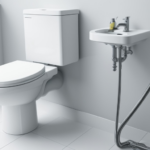Planning a wedding can feel like organizing a small army. From setting the date to coordinating with vendors and ensuring that every detail is right, it’s a hectic yet exciting time for couples. For wedding planners, having a comprehensive checklist is not just a luxury; it’s a necessity.
This blog post is designed to provide you with the ultimate wedding planning checklist—a tool that can help you manage every aspect of the big day and ensure your clients have a seamless experience.
Understanding the Importance of a Wedding Planning Checklist
A wedding planning checklist is more than just a list of tasks; it serves as a roadmap that outlines each step in the wedding planning process. It helps wedding planners stay organized and ensures that no detail is overlooked. According to The Knot, nearly 37% of couples consider hiring a wedding planner to relieve the stress of managing logistics. This statistic reinforces the importance of a solid checklist, as it allows planners to provide the highest level of service.
Not only does a checklist streamline the planning process, but it also fosters communication between the planner and the couple. Regular check-ins based on the checklist can help ensure everyone is on the same page. A well-organized planner is viewed as a reliable partner, invaluable for building trust and rapport with clients.
Additionally, a checklist can serve as a reference point for future projects. By noting which tasks were most challenging or required the most time, wedding planners can optimize their processes for upcoming events. This continuous improvement cycle is crucial for enhancing the overall client experience.
Pre-Planning Essentials
Setting the Date
Choosing the date is one of the first steps in the wedding planning process. It may seem simple, but the date can significantly affect all other elements of planning. Planners should consider seasonal weather, holidays, and any major events taking place in the area that could affect availability. A winter wedding might be picturesque with snow, but it also requires contingency plans for inclement weather.
Another critical factor is the couple’s schedule and availability. Are there significant dates, such as anniversaries or family birthdays, that should be avoided? Encouraging couples to discuss their preferences openly will lead to a more harmonious planning experience.
Once the date is set, it’s essential to communicate it with all parties involved, especially potential vendors and venue locations. Availability may be limited, so acting quickly can save headaches down the line.
Budgeting
Creating a budget is a crucial component of pre-planning. It not only guides decision-making but also helps prevent overspending. Couples should sit down together (and possibly with their parents) to determine their overall budget and how funds will be allocated across various categories such as venue, catering, attire, and flowers.
Wedding planners can assist by providing a detailed breakdown of expected costs and helping clients identify where they can make adjustments if needed. Transparent discussions about budget limitations can prevent misunderstandings later on.
Encourage clients to set aside a small emergency fund, typically 10% of the total budget, for unexpected expenses that may arise as plans progress. This contingency fund will provide peace of mind and ease stress.
Creating the Guest List
Once the budget is established, the couple can start creating their guest list. This part of the process can be challenging, as emotions may run high when deciding who to invite. Planners can facilitate this process by suggesting that the couple categorize potential guests into tiers, such as “must-have,” “nice-to-have,” and “if there’s room” lists.
It’s also essential to consider venue capacity when finalizing the guest list. Couples should aim for a number that fits within their budget and chosen venue, ensuring that every guest feels welcome without overcrowding.
After the final list is compiled, planners can assist in tracking RSVPs and managing any changes that occur leading up to the big day. This part of the planning can often become overwhelming, but having a strategy in place can alleviate some of the pressure.
Venue and Vendor Selection
Criteria for Choosing the Perfect Venue
Choosing the perfect venue requires thoughtful deliberation. Key factors like location, size, style, and amenities should match the couple’s vision and budget. Planners should advise clients to tour various venues and inquire about details such as parking availability and noise restrictions. If you’re near Park City, be sure to explore the event spaces there.
One useful tip is to create a checklist of must-haves for each venue. This list can include things like outdoor space for the ceremony, accessibility for guests, and proximity to accommodations. Taking notes during site visits will also help in making a final decision.
Additionally, couples should consider the venue’s availability on their desired date and whether it aligns with their vision. Providing options for different styles—such as rustic barn settings or elegant ballrooms—can help couples visualize what they truly want.
How to Select Reliable Vendors
Once the venue is secured, it’s time to choose vendors. This process can be daunting, given the wide array of options available. Planners can offer guidance by recommending vendors they trust based on past experiences and client testimonials.
Encourage couples to interview multiple vendors in each category—photographers, caterers, florists—to find those who resonate most with their style and preferences. Questions about experience, availability, pricing, and services offered will help narrow down the options.
Creating a vendor checklist that includes important details such as contact information, services offered, and payment terms will keep everything organized. Not only does this ensure that deadlines are met, but it also fosters accountability and communication between all parties.
Designing the Day
Themes and Decor
Once the logistics are settled, it’s time to focus on the aesthetic elements of the wedding. This is where the couple’s style shines through. Planners should encourage couples to explore various themes, whether classic, modern, rustic, or whimsical.
Mood boards can be beneficial for visualizing ideas. Encourage couples to gather inspiration from magazines, Pinterest, and social media, and to be open to new trends they may not have initially considered. Once a theme is established, it can inform decisions about décor, floral arrangements, and color palettes.
Working with talented decorators and florists will be crucial in bringing these ideas to life. By discussing the couple’s vision with vendors, planners can ensure that every detail aligns with the intended look and feel of the wedding.
Personalizing the Wedding
To make the wedding truly unique, personalization is key. Planners should encourage couples to incorporate elements that reflect their personality as a couple. This could be anything from custom signage, personalized vows, or unique favors that guests can take home.
Ideas for personalized touches include curated playlists of meaningful songs, specialty cocktails named after the couple, or family heirlooms in the décor. These little details can transform a standard wedding into a heartfelt celebration that resonates with every guest.
Another way to enhance personalization is by sharing the couple’s love story through decor or speeches. This adds a special touch and invites guests to connect more deeply with the couple’s unique narrative.
Managing the Day-of Details
Timelines
On the wedding day, having a well-prepared timeline is essential. This ensures that every event flows smoothly and that everyone stays on schedule. Planners should work closely with the couple and vendors to create a detailed timeline that outlines the order of events, including the ceremony, reception, and any special activities.
Distributing the timeline to key players can alleviate confusion and keep everyone informed. This includes the couple, bridal party, and vendors. Having a clear plan will minimize stress and create a more enjoyable experience for everyone involved.
It’s also wise to build in buffer time for unexpected delays. While it’s impossible to predict every hiccup, an extra 15-30 minutes can make a world of difference in keeping the day on track.
Seating Arrangements
Seating arrangements may seem trivial, but they play a vital role in the guest experience. Planners can assist couples in designing a seating chart that considers relationships and dynamics among guests. Grouping friends, family, and other social circles can foster a more enjoyable atmosphere.
Utilizing software or online tools for seating arrangements can simplify this process. Visualizing the layout allows couples to see how everything fits together before making final decisions. Additionally, consider having a backup plan for guests who may show up unexpectedly.
It’s also important to communicate the seating arrangement clearly to guests. Consider creating display boards at the entrance or sending digital invitations with the seating assignments included.
Post-Wedding Wrap-Up
Final Payments
After the last dance has been shared, the wedding is still not finished. One of the key post-wedding tasks is to finalize payments with all vendors. Planners should ensure that contracts are reviewed, and invoices are settled promptly. This not only maintains a good relationship with vendors but also prevents any future misunderstandings.
It’s a good practice to gather all receipts and contracts for the couple to keep in one folder. This makes tracking expenses more manageable and can serve as a reference for any issues that may arise later.
Final payments should be confirmed ahead of time to avoid any last-minute checks or confusion during tear-down. This logistical detail can save a great deal of time and trouble.
Thank You Notes
Encouraging couples to send thank-you notes to guests and vendors is a thoughtful gesture that goes a long way. A personalized message expressing gratitude for attending and for the gifts received can create lasting impressions.
Planners can guide how to efficiently manage thank-you notes. Creating a list during the wedding can help streamline this process later. Encourage couples to write notes as soon as possible while memories are still fresh.
For an added touch, suggest that couples include a photo from the wedding day with their thank-you notes. This personalizes the gesture and leaves a warm memory with everyone involved.
Reflecting on the Big Day
Finally, taking the time to reflect on the wedding day can be incredibly rewarding. Encourage couples to sit down together to discuss what went well and what could be improved for future events. This reflection can help build a stronger partnership and allow them to cherish the memories created.
Consider creating a scrapbook or digital album of the day, including moments captured by guests alongside professional photos. This keepsake will serve as a beautiful reminder of their special day and the planning process that led up to it.
Staying Organized for Success
In conclusion, a well-crafted wedding planning checklist is invaluable for wedding planners. It not only helps streamline the planning process but also enhances communication, fosters personalization, and ensures that every detail is accounted for. The ultimate wedding planning checklist serves as a powerful tool that allows planners to manage each stage effectively, resulting in a memorable day for both couples and guests.



